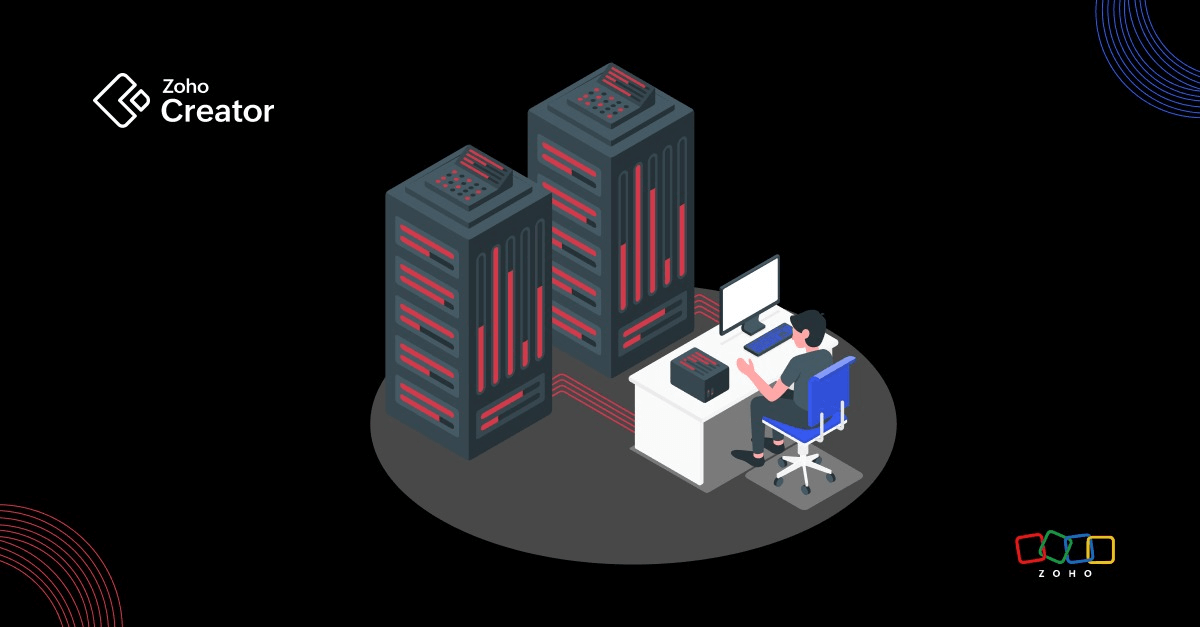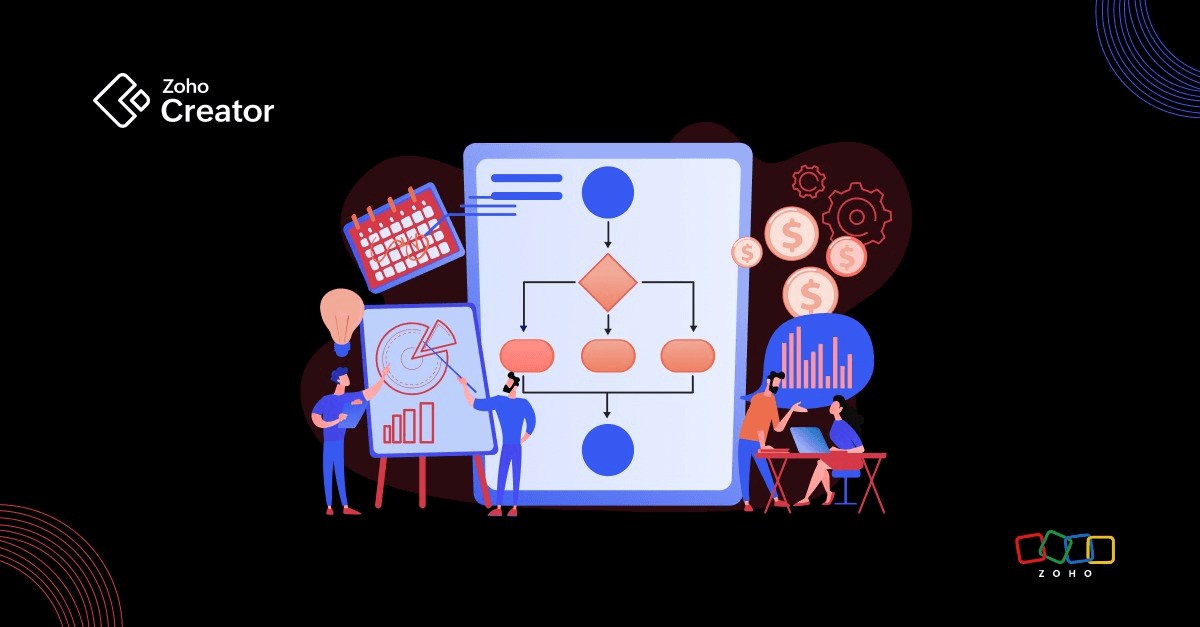- HOME
- Know Your Tech
- Visual programming languages: Promises, pitfalls, and pertinence
Visual programming languages: Promises, pitfalls, and pertinence
- Last Updated : April 20, 2023
- 3.8K Views
- 9 Min Read
Whether you're creating a web or mobile application, centralizing and structuring your business data, facilitating data flows across multiple systems, or even empowering your systems with artificial intelligence, programming-assisted digital initiatives have become an imperative for differentiating your business in a crowded marketplace.
As per Gartner IT Insights for 2020, 91% of businesses are engaging in a digital initiative, with 40% of them reaching scale, albeit to different degrees of success.
Embarking on a digital transformation journey can be nerve-wracking, especially if you have little firsthand experience with coding. As you take your initial steps, it's natural to be confronted with several pertinent questions with regards to programming:
What technologies, platforms, and software frameworks must you adopt? How time consuming are your choices vis-à-vis popular alternatives?
Do some technologies demand more labor, with longer learning curves, than others?
And most importantly, will some choices cost you a fortune?
It would behoove you to understand a few underlying concepts around programming languages, like their range of applicability, with examples and widely-adopted technologies in the context of managing a digital business.
What is programming?
Programming is the process of putting together a set of instructions that tells a computing machine how to execute a specific task.
Since the code you create acts as a detailed input for a computer to perform a series of actions, it needs to be structured in a format that can be readily understood and processed by the machine. Software frameworks act as a standard for programming, ensuring adherence to an industry-accepted structure that helps foster universality and reusability of programs created, while helping massively reduce code bloat (unnecessarily lengthy lines of codes, elimination of which is critical for program performance).
Programming languages are intrinsically linked to software frameworks, in the sense that programming languages are to software frameworks what pool is to 8-ball or 9-ball. With a cue stick, balls, and a pool table, you're literally able to play by your own set of rules. But if you'd like to win a 9-ball tournament, you must play by the rules of 9-ball.
In line with this analogy, while you don't have to stick to a specific framework, it is necessary that you follow a popular framework if you're looking to accomplish a specific outcome and broaden the utility of the program you've developed.
Both the framework and the programming language you zero in on will have a strong bearing on the answers to some of the overarching questions presented above.
What are the key elements of a programming language?
Programming languages, irrespective of their type or the framework they adhere to, have a few essentials. These building blocks can differ marginally from one another based on the nature of the programming language, though:
Syntax: This covers the broad surface form of the programming language
Semantics: This covers the actual language used in relation to the form they're presented in
Type system: This helps define various kinds of values and expressions to ensure standardized data operations
Standard library: These include definitions for commonly used algorithms, data structures, and input/output mechanisms
What is visual programming?
There are two broad sets of programming languages—textual and visual. While textual programming languages (TPLs) are the more conventionally used and prevalent form, visual programming languages (VPLs) have carved a niche for themselves in the past few decades. Increased adoption of visual programming can be attributed to both their root philosophy of code abstraction, that makes it more suitable for nontechnical developers, and their perceived similarities with their text-dependent counterpart.
Visual programming, with visual cues to define relationships, offers a graphical approach to programming, where preconfigured code blocks are utilized in place of textual lines of code to develop an application.
Textual programming instead uses a compilation of words, numbers, and punctuation to develop a program. This abstraction of code is akin to the one utilized by low-code/no-code platforms in packaging several lines of codes as bundled, prebuilt code blocks, that can be added one atop the other in an integrated development environment, and made to communicate with other code blocks through a series of connections. This also borrows a component-oriented paradigm from dataflow-based programming, where code blocks operate as networks with messages passing across each component.
Types of visual programming languages
Visual programming languages are further categorized into 3 sets, based on the nature of the visual expressions/graphical representations utilized, namely:
Icon-based: These languages follow a flowchart-like representation of the program structure, with icons depicting different menus, program commands, error handling commands, and more. A popular icon-based VPL is LabView, which is a systems-engineering platform/development environment which utilizes icon-based graphical representation for depicting every aspect of development, from hardware configuration to debugging.
Form-based: Such VPLs adopt a form-based representation of the GUI window, containing components and controls. These could include both visual and nonvisual controls. While buttons and text boxes constitute the former, timers, layout cues, and more are examples of the latter. A quintessential form-based VPL is Query by Example (QBE), which is a database query language for relational databases, that deploys form-based controls for gathering user input.
Diagram-based: Diagram languages use different diagrammatic representations for different use cases, in the context of programming. This can be best understood with an example. UML (unified modeling language) is a standardized specification language used in software engineering for object, process, or systems engineering modelling. While the class diagram in UML provides a static view of the classes, the interaction diagram displays the link between objects or sequence of actions, an activity diagram describes the workflow, and so on.
Visual programming vs textual programming
While it's easy to fall into believing that any TPL can be converted to a VPL with the right amount of skill and strategy, the reality is less clear. VPLs can handle most use cases a developer will throw at it, and they're extremely easy to use for both technical and nontechnical users. However, the level of customization that can be achieved with TPLs, their ability to handle complex functions, and their overall appeal to both technical and nontechnical user segments render them a virtual necessity for businesses embarking on serious digital innovation.
The table below highlights a few key differences between the two:
Parameter | Visual programming languages (VPL) | Textual programming languages (TPL) |
Conceptualized in | 1987 | 1957 |
Target audience | Nontechnical users | Technical and nontechnical users (in case of business-user-friendly TPLs) |
Syntax | Graphical symbols | Textual notations |
Mode of programming | Drag and drop | Written lines of code |
Development cycle time | Relatively low, owing to drag-and-drop nature of code building | Relatively high (depending on how business-user-friendly the language is, like Deluge, Python, etc.) |
Ease of development | Easier, with users mostly having to define "What-to" rather than "How-to" | Programmers define both "What to do" and "how to do it" |
Code review and comprehensibility | Easily decipherable | Relatively tougher (contingent on quality of developer, cohesiveness between multiple developers, etc.) |
Syntax, building relationships, sequences, interactions | Very easy, through arrows or other graphical dependency | Requires several lines of textual code, and cumbersome if the TPL is not business-user-friendly |
Prior coding knowledge | Not required | Required to varying degrees (based on complexity of the language) |
Customizability and ability to handle complex tasks | Relatively low | Very high room for customization and handling complexities |
Auto-parallelization | A natural consequence, and allows for specifying data and tasks to processes and memory | Linear, and requires vectorization before processing |
Popular examples |
| C, C++, Java, PHP, Deluge |
Key upsides of visual programming for businesses
There is little doubt that VPLs have upsides over their text-dependent counterparts. Here are a few cases where VPLs emerge a winner:
Quicker development time
VPLs’ code abstraction augmented by a graphical approach to program creation, accelerates development by a significant margin. The graphical approach also assures easier code review and smoother handovers of code, with fewer chances of key elements being overlooked.
Easy relationship building/linkages
The level of abstraction VPLs promise enable users to build relationships between various components of their program with visual symbols like arrows. This not only makes review and debugging a cakewalk but also renders obsolete the need for several hundred lines of hand coding for syntax.
Well suited for novices
VPLs were originally conceived to dispel perceptions of programming languages being tough to understand by novices. VPLs therefore observed significant uptake by educational institutions, a trend that holds true to this day. The graphical approach helps strip down programming to its essential logical core, pushing syntax to the periphery.
Supports parallel processing
Parallel computation—the ability to convert sequential scalar codes to vectorized, multithread codes—is often a natural consequence of visual programming. This parallelization allows for vectorized codes to be processed by multiple processors at the same time, further accelerating the development cycle.
Where visual programming falls short
There's no denying that the potential impact and possibilities VPLs offer for businesses. However, one must also be cognizant that the VPLs of today fall far behind textual languages in the context of business application development, automation, and enterprise data management.
Here are a few reasons why:
Low degree of customizability
VPLs' reliance on code abstraction comes with its own set of challenges. The low degree of customizability of ready-made code blocks stems from the lack of provisions for developers to perform some form of custom hand coding to enhance the program beyond the predefined constraints stipulated by the VPL.
The Deutsch limit
The Deutsch limit refers to the adverse impact high information density can have on ease of use. As per the adage, the maximum number of unique graphical elements on a screen cannot exceed 50, which hinders the breadth of functionality that VPLs promise.
Cohesiveness with business IT
Professional IT developers and citizen developers need to work in conjunction for successful business digitization. Professional developers might find the shift to a VPL cumbersome, restrictive in scope, and painstakingly time-consuming. A seasoned programmer versed in traditional programming might find it easier to review hundreds of lines of code rather than 100 graphical elements stacked one atop the other.
Versatility of low-code platforms
No-code application development platforms share the principle, promise, and philosophy of visual programming in its bare essence, to make development both simple and quick. With their drag-and-drop-powered GUI, users can create a fairly sophisticated business application without having to write a single line of code. However, developers who solely rely on the abstractions offered by a no-code platform are restricted in the worldliness of their applications, as a consequence of the limitations that are intrinsic to the platform.
Low-code platforms, on the other hand, give both citizen developers and professional developers the room to customize their applications infinitely, and make it accomplish advanced tasks, by supplementing their graphical approach with minimal hand coding. Low-code platforms have strived to make their programming languages as intuitive and user friendly as possible, to broaden their relevance and applicability to varied business use cases and user segments.
This has helped the meteoric rise in their adoption by businesses, which is anticipated to balloon even further in the years to come. Gartner research predicts that by 2024, 65% of all applications built will be developed on some form of low-code technology.
Visual programming languages and no-code platforms need to invest more towards accentuating their robustness, scalability, customizability, and business relevance, to make them more pertinent for businesses of today. Their limited ability to digitize complex business processes, requires augmenting these platforms with other technologies, that then add to the cost.
Difference with Deluge
Deluge is a user-friendly textual programming language that powers Zoho’s suite of apps for businesses, which includes the low-code application development platform, Zoho Creator. Deluge is designed to cater to business and nontechnical users who are looking to get hands-on with digitizing their business. These users, also known as citizen developers, usually program in the environment provided to them by business IT. Handovers and increased cohesiveness between IT and citizen developers is made simple on Zoho Creator.
Zoho Creator’s feature-rich platform offers noteworthy abstraction of code and helps hasten business application development and process automation 10x times. Borrowing on the principles of visual programming, it allows for managing a larger part of an application development life cycle without any hand coding. Deluge adds to Creator’s appeal by giving users the ability to achieve advanced automation, increased customization, heightened collaboration, and improved operational efficiencies.
You can pick up Deluge in minutes and get underway with a working program in no time. Head here if you want to learn more.
About Zoho Creator
Zoho Creator is an industry accredited, low-code application development platform that helps businesses streamline, centralize, and modernize their data, processes, application landscape, and digital infrastructure, without requiring any prior programming know-how. Recognized as a visionary in Gartner’s Magic Quadrant for Low-Code Application Development Platforms, 2020, Zoho Creator provides you with endless possibilities in terms of the functionality that you want to digitize. Be it customer service apps, accounting and invoicing, or project management, Zoho Creator offers a module for every business need.
95% of customers have been able to implement using Zoho Creator within a single month!
 Ram Srinivas
Ram SrinivasRam is a product marketer for a couple of products incl. Zoho Creator. He is an avid SaaS and automation enthusiast. In his spare time, he likes indulging in war novels, motorcycling or strumming away on his ukulele.



